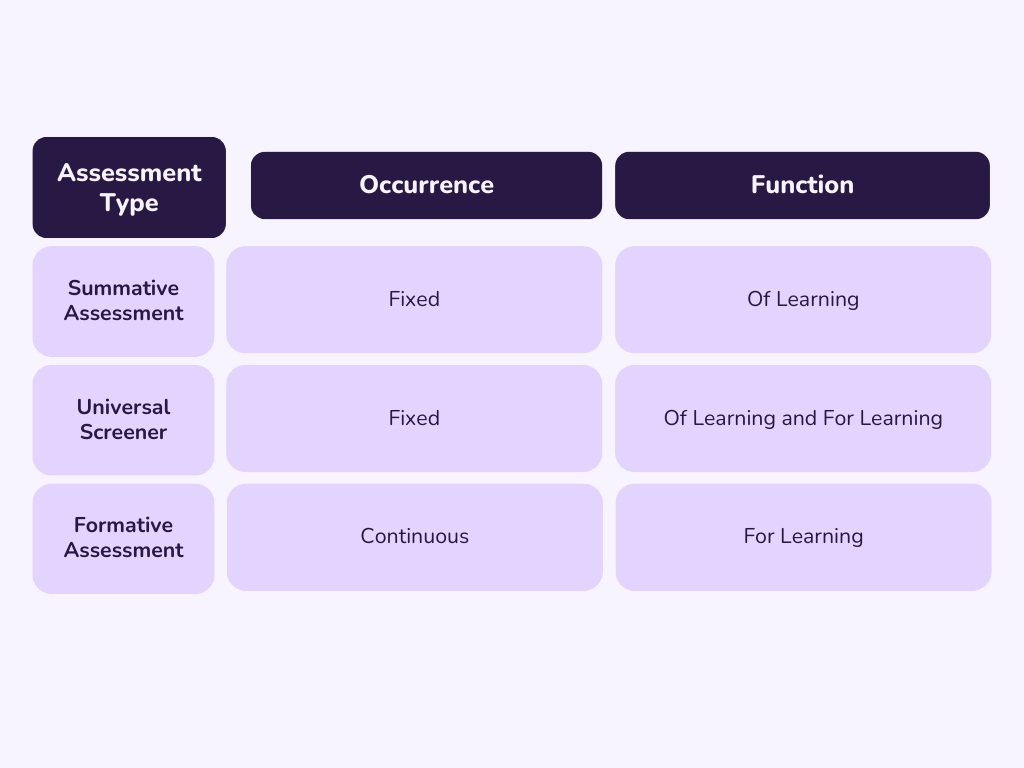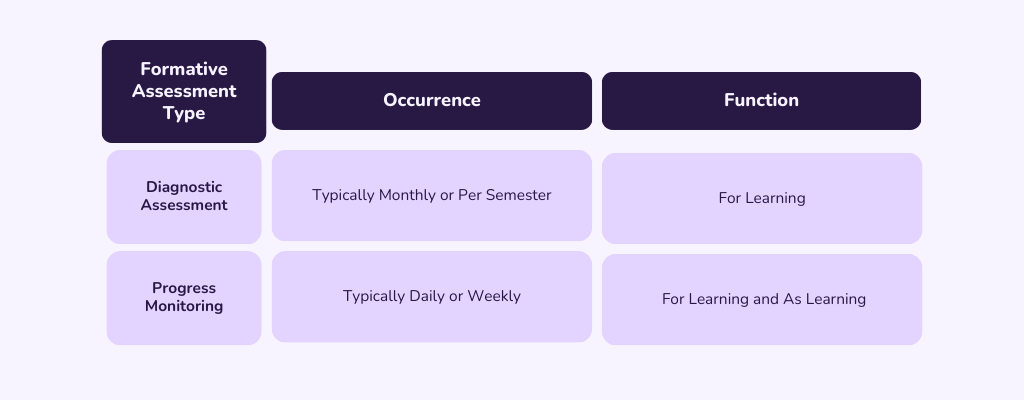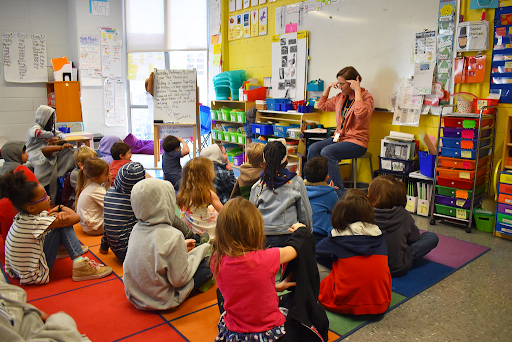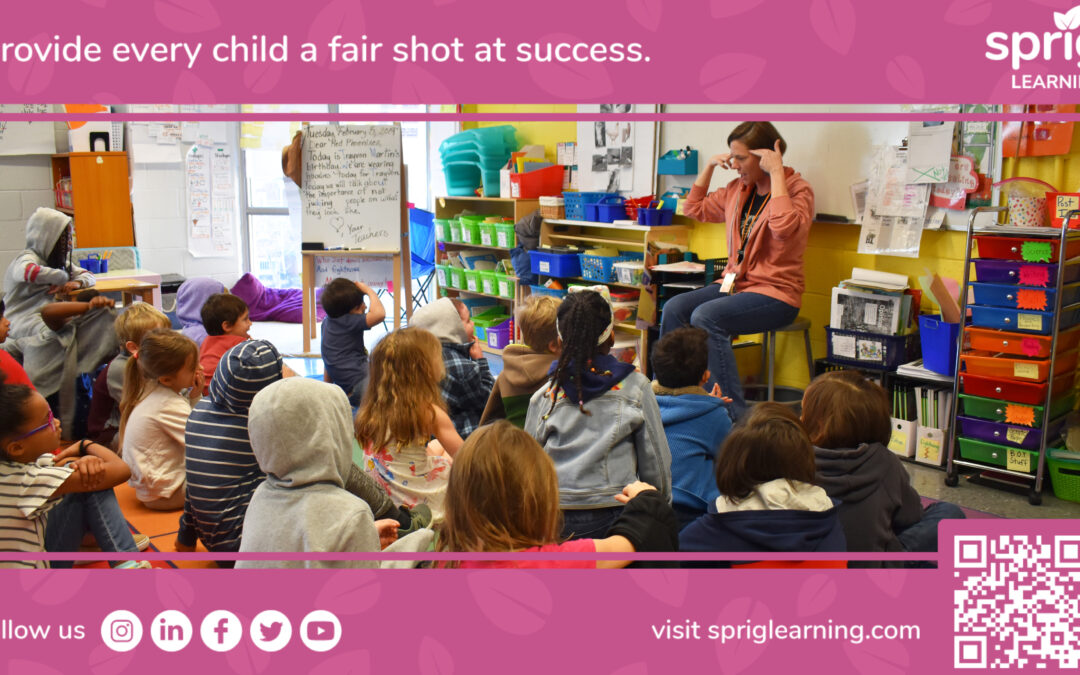So much has already been said and written about the practice of formative assessments.
Let’s get reacquainted with its definition,characteristics, function in early literacy, and value, before exploring what can be done to improve them.
Definition, Function and Value

Formative assessments have been best defined in prior Sprig articles as assessments that monitor early learning to provide ongoing feedback. Early literacy educators use them to adapt instruction and ensure that every child has the opportunity to succeed.
Its regular frequency sets it apart from other more standardized forms of assessments. In “Holistic Formative Assessments. The New Wave”, it was stated that formative assessments happen regularly in classrooms where a student’s progress is evaluated on a daily or weekly basis.
In “What You Should Know about Assessments in Early Childhood Education”, the regularity of formative assessments is further established as they deal with the day-to-day learning process as it unfolds. They are ongoing in nature and are integrated into the daily teaching practices.
Examples cited include homework assignments, in-class activities and group work. In the same article, it is mentioned how formal formative assessments use well-defined grade rubrics, while informal assessments use methods such as observations, notes, etc.
The function of formative assessments in early literacy is clearly stated in “Why Small Group Instruction is Needed For Assessments in Early Literacy”. These assessments help educators diagnose specific foundational skills and monitor the progress of each early learner in the classroom. They offer valuable insights into a child’s learning skills, abilities and challenges.
In “Traditional Early Years Assessments vs Holistic Assessments”, the value of formative assessments is highlighted. For example, how educators who consistently use formative assessment strategies double the speed of learning for their students.
Exploring the science and art of formative assessments is a vast and intriguing subject. It’s highly recommended to check out the referenced articles to gain a deeper understanding of formative assessments.
To answer the question, how formative assessments can be improved in the classroom, two approaches may be taken. 1) Understanding its Core Essence. 2) Understanding its Core Types.
1) Core Essence of Formative Assessments
By tapping into what formative assessments actually are, it’s possible to further improve existing formative assessment practices in early literacy. It’s important to differentiate formative assessments from summative assessments and universal screeners.
How Are Formative Assessments Different from Summative Assessments and Universal Screeners?

Summative assessments refer to standardized tests, which are also known as outcome evaluators. These assessments usually occur at the end of the year and are fixed.
Summative assessments are “of learning”, while formative assessments are “for learning”.
Besides formative assessments, there is another category of assessments that is “for learning”, which is universal screeners.
While universal screeners share similar characteristics with summative assessments in that they are also fixed in when they happen, these assessments are for measuring students’ proficiency in specific skills. It is predominantly used to identify students that may be at risk for learning difficulties. In many ways, they are closer to formative assessments.
But formative assessments are still unique, because unlike universal screeners which are scheduled ahead of time, and happen a fixed number of times a year, formative assessments are ongoing and continuous, and can be expected to take place regularly throughout the school year.
Thus, consistency in regularity is key to improving formative assessments. Establishing this regularity is essential for achieving best-in-class formative assessment practices.
When assessments are conducted infrequently, distinguishing them from universal screeners becomes challenging. Therefore, maintaining a consistent schedule of formative assessments is essential for their improvement.
Furthermore, in order to improve, formative assessments must find ways to better incorporate a differentiated instruction mechanism. Without this feature, assessments risk being overly generalized, resembling summative assessments too closely.
To maintain their formative nature, assessments should account for the diverse learning needs of students, integrating differentiated instruction seamlessly into the assessment process.
2) Core Types of Formative Assessments
By understanding the different types of formative assessments, it’s possible to provide specific improvements that considers the total scope of such an assessment practice. In order to do this, it’s essential to have a clear understanding of what formative assessments actually entail.
What Are The Types of Formative Assessments and Their Differences?

There are two major kinds of formative assessments, diagnostic assessments and progress monitoring assessments. They are both “assessments for learning”. Progress monitoring assessments in particular have the special distinction of being both “for learning” and “as learning”.
This is because in progress monitoring assessments, not only are teachers learning about the students’ learning strengths and needs, but the assessment practice itself is designed to track students’ learning progress or growth across the entire school year, reflecting what skills require further assessment, practice, and/or intervention to support learning.
Thus, in order to improve formative assessment in early literacy, it is very important to ensure that there is adequate teacher-student dialogue. The assessment is “for learning”, but there is also a scope for the assessment to be “as learning”. Such is the beauty of formative assessments.
Embracing the Essence and Diversity of Formative Assessments

Concluding this exploration into the realm of formative assessments in early literacy, it’s evident that these assessments play a pivotal role in shaping instructional practices and nurturing student learning journeys.
From understanding their core essence to delineating their various types, this article has explored the nuanced landscape of formative assessments to offer suggestions on how to identify improvements in the classroom for early literacy.

